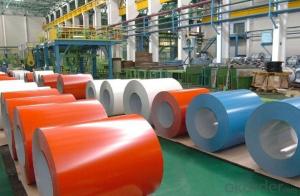Versatility is the name of the game when it comes to steel structures. These marvels of modern engineering are the backbone of diverse industries, offering strength, flexibility, and durability. Whether it’s a towering skyscraper, a sprawling industrial complex, or a sleek, modern bridge, steel structures are the silent heroes that make it all possible. But what makes them so special? Let’s dive into the world of steel and find out.
The Strength of Steel
Steel’s strength is legendary. It’s one of the main reasons why it’s the go-to material for construction projects around the globe. Steel can bear heavy loads without losing its shape or integrity, making it ideal for high-rise buildings and large-scale infrastructure projects. Imagine the weight of a city block resting on a single structure – that’s the kind of trust we put in steel.
Aesthetic Appeal
But steel isn’t just about brute strength. It also has an undeniable aesthetic appeal. Architects and designers love working with steel because it allows them to create stunning, innovative designs that push the boundaries of what’s possible. From the Eiffel Tower to the Sydney Opera House, steel has been the silent partner in some of the world’s most iconic structures.
Sustainability and the Environment
In today’s eco-conscious world, sustainability is a key concern. Steel structures score high on this front too. They are recyclable, which means that at the end of their life cycle, they can be repurposed into new structures without losing their strength. This reduces waste and conserves natural resources. Plus, steel is a material that can be produced with a relatively low carbon footprint, making it a greener choice for construction.
Adaptability and Customization
One of the most compelling aspects of steel structures is their adaptability. They can be easily customized to fit the unique needs of different industries. Whether it’s the specific requirements of a manufacturing plant, the storage needs of a warehouse, or the design specifications of a residential building, steel can be tailored to meet these demands. This adaptability is a game-changer for industries that require bespoke solutions.
Economic Benefits
Let’s talk economics. Steel structures are cost-effective over the long term. They require less maintenance than other materials, which translates to lower operational costs. Additionally, the speed of construction with steel is unmatched, which means projects can be completed faster, bringing them to market or operation sooner. This can be a significant advantage in competitive industries.
Safety and Security
Safety is paramount in any construction project, and steel structures deliver on this front. They are resistant to natural disasters like earthquakes and hurricanes, providing a safe haven for people and property. Steel’s inherent strength and flexibility allow it to absorb and distribute forces, reducing the risk of catastrophic failure.
Innovation and Technology Integration
The future is digital, and steel structures are at the forefront of this revolution. With the integration of smart technologies, steel structures can now be more than just inert structures. They can be equipped with sensors to monitor structural health, energy-efficient systems to reduce environmental impact, and even systems that adapt to changing conditions, making them truly intelligent.
The Human Touch
While steel structures are often associated with industrial settings, they can also be warm and inviting. Designers are increasingly finding ways to incorporate steel into residential and commercial spaces, creating a blend of industrial strength and cozy comfort. The result is spaces that are both functional and aesthetically pleasing.
The Future of Steel Structures
As we look to the future, the role of steel structures in our lives will only grow. With advancements in materials science and construction techniques, we can expect to see even more innovative uses of steel. From self-healing structures that can repair themselves to structures that can generate their own energy, the possibilities are endless.
In conclusion, steel structures are more than just a construction material; they are a symbol of human ingenuity and progress. They embody the spirit of innovation, the strength of our ambitions, and the resilience of our dreams. As we continue to push the boundaries of what’s possible, steel will be there, a steadfast companion on our journey to the future.

